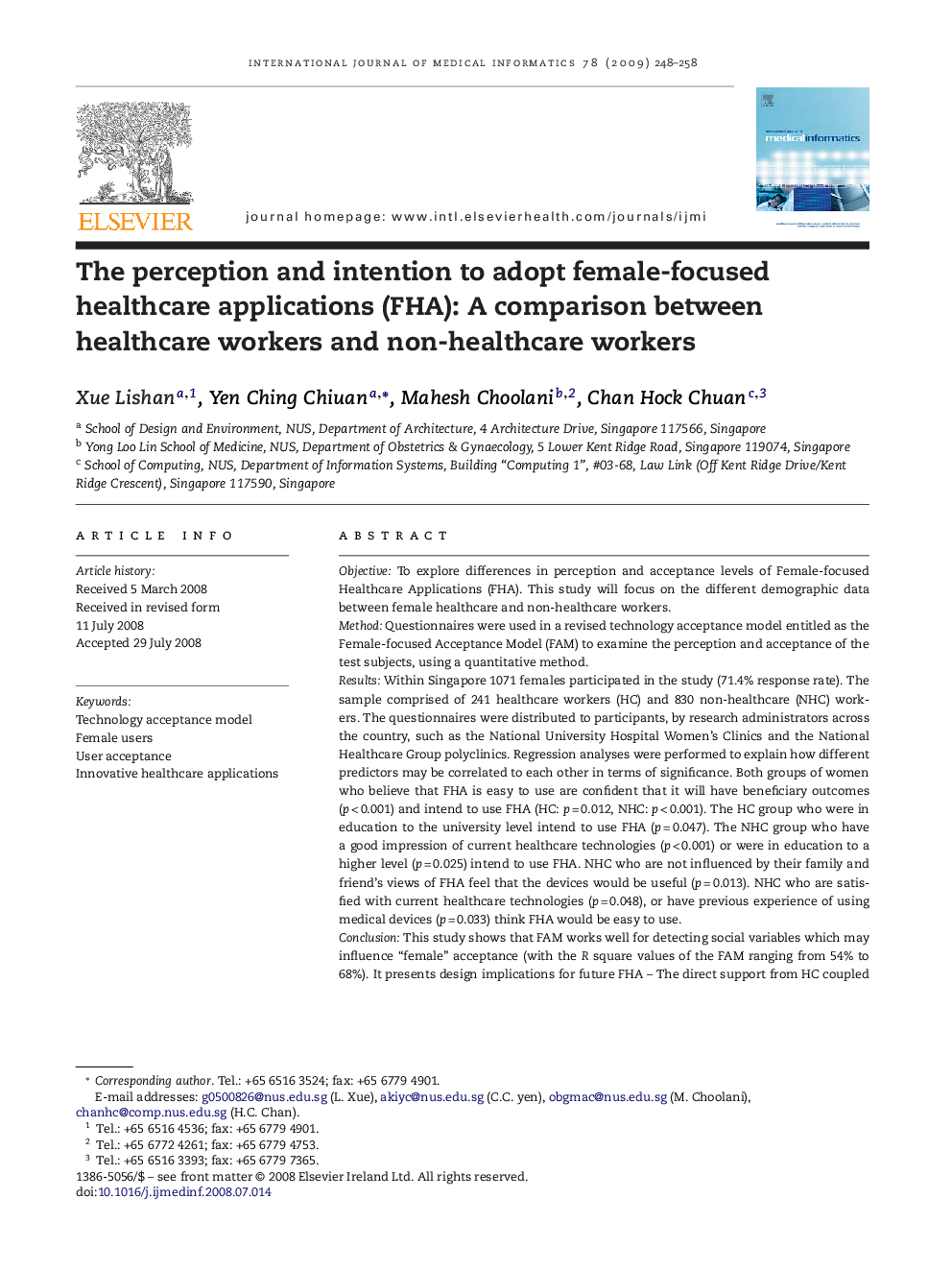| کد مقاله | کد نشریه | سال انتشار | مقاله انگلیسی | نسخه تمام متن |
|---|---|---|---|---|
| 516369 | 1449184 | 2009 | 11 صفحه PDF | دانلود رایگان |

ObjectiveTo explore differences in perception and acceptance levels of Female-focused Healthcare Applications (FHA). This study will focus on the different demographic data between female healthcare and non-healthcare workers.MethodQuestionnaires were used in a revised technology acceptance model entitled as the Female-focused Acceptance Model (FAM) to examine the perception and acceptance of the test subjects, using a quantitative method.ResultsWithin Singapore 1071 females participated in the study (71.4% response rate). The sample comprised of 241 healthcare workers (HC) and 830 non-healthcare (NHC) workers. The questionnaires were distributed to participants, by research administrators across the country, such as the National University Hospital Women's Clinics and the National Healthcare Group polyclinics. Regression analyses were performed to explain how different predictors may be correlated to each other in terms of significance. Both groups of women who believe that FHA is easy to use are confident that it will have beneficiary outcomes (p < 0.001) and intend to use FHA (HC: p = 0.012, NHC: p < 0.001). The HC group who were in education to the university level intend to use FHA (p = 0.047). The NHC group who have a good impression of current healthcare technologies (p < 0.001) or were in education to a higher level (p = 0.025) intend to use FHA. NHC who are not influenced by their family and friend's views of FHA feel that the devices would be useful (p = 0.013). NHC who are satisfied with current healthcare technologies (p = 0.048), or have previous experience of using medical devices (p = 0.033) think FHA would be easy to use.ConclusionThis study shows that FAM works well for detecting social variables which may influence “female” acceptance (with the R square values of the FAM ranging from 54% to 68%). It presents design implications for future FHA – The direct support from HC coupled with the user-friendly personal device ensures that the technology is an effective enabler for personal well-being and self-managed healthcare. In order to encourage women to adopt and use these applications, there is a need to communicate the potential usefulness of the applications to women. To encourage the pregnant women to use FHA (in the area of prenatal care), issues such as their experience with medical devices and social status should be considered. The findings and their implications presented here were obtained from a single study that targeted a possible user group in Singapore. Further research could be carried out in the future to access similar issues across broader cultural and social horizons.
Journal: International Journal of Medical Informatics - Volume 78, Issue 4, April 2009, Pages 248–258